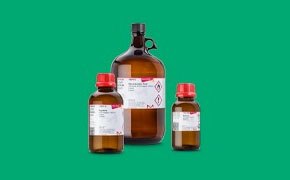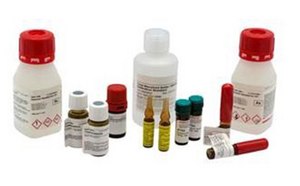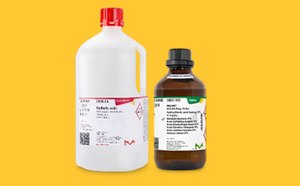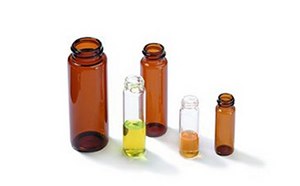Cannabinoid Profiling and Potency Testing of Cannabis and Cannabis Products

The last decade witnessed the legalization of recreational and medical use of cannabis across the US and many other countries. The plant (Cannabis sativa, Cannabis indica and Cannabis ruderalis) contains over 100 cannabinoids, only some have been characterized. ∆-9-tetrahydrocannabinol (THC) is the primary psychoactive constituent and cannabidiol (CBD) is the primary non-psychoactive constituent. Hemp was legalized in the US in 2018 with additional limits on total THC content in hemp derived CBD products. Regulatory requirements differ between countries and states; however, potency testing, and cannabinoid profiling requirements are mandated to varying degrees.
Reliable and accurate profiling and quantitation of major and minor cannabinoids in cannabis/hemp plant materials, extracts and products ensures transparency, uniformity, and quality of the preparations.
High-throughput analysis of cannabinoids in a variety of matrices using Ascentis® Express C18 Column
Featured Categories
Your Solvent Source: Find the right fit with Supelco®, SigmaAldrich®, & SAFC® brands, covering analytical, lab, & biopharmaceutical uses. Order online.
Certified Reference Materials: CRMs for forensic, clinical, environmental, pharmaceutical, and food & beverage testing.
Uncover a wide acid range: Supelco® for analysis, Sigma-Aldrich® for labs, SAFC® for biopharma. Tailor solutions for varied needs.
Ensure precise analysis: Inert, certified vials prevent extractables, leachables. Reduce risk with Supelco® autosampler, general-purpose vials for HPLC, GC/MS, LC/MS.
Types of Cannabinoids
Cannabinoids are a group of C21 terpenophenolic compounds, found primarily in Cannabis indica, Cannabis sativa and Cannabis ruderalis. They interact with cannabinoid receptors in the body to produce psychoactive and non-psychoactive effects. Cannabinoids can be divided into 11 subclasses: cannabigerol (CBG-type), (–)-Δ9-tetrahydrocannabinol (Δ9-THC-type), cannabidiol (CBD-type), cannabichromene (CBC-type), cannabinol (CBN-type), (–)-Δ8-tetrahydrocannabinol (Δ8-THC-type), cannabicyclol (CBL-type), cannabinodiol (CBND-type), cannabielsoin (CBE-type), cannabitriol (CBT-type) and miscellaneous others. Cannabis plant cultivars have been developed to optimize production of either THC or CBD. Pharmacological effects of most other cannabinoids are not well studied but are of emerging interest.
Workflow for Cannabinoid Analysis
Cannabis is a challenging product to analyze as it contains numerous cannabinoids and terpenes and is available in various forms such as flowers and concentrates, food, and cosmetic products having different concentrations of different cannabinoids. A typical workflow for cannabinoid analysis involves:
- sample preparation by extraction, QuEChERS (quick, easy, cheap, effective, rugged, and safe) or SPE (solid-phase extraction)
- calibration using high-quality reference standards
- chromatographic separation and analysis by LC or GC methods
Cannabis Sample Preparation
Cannabis samples are extremely diverse, ranging from dried flowers, cannabis extracts, cosmetics, and various kinds of edibles. The cannabis plant itself is a complex matrix with numerous terpenes, cannabinoids, lipids, chlorophyl, and other constituents. Solvent based extraction, QuEChERS, and SPE are common extraction and clean-up methods used in the sample preparation of cannabis products.
Standards and Calibration
Accurate quantitation of cannabinoids requires the use of precise calibrators. Pure cannabinoid standards are often resinous, viscous, air sensitive and difficult to handle. They are therefore often provided in a solution format, individual or as mixtures. Cannabinoid standards are often provided in a solution format, individual or as mixtures. Certified Reference Materials (CRMs) manufactured according to ISO17034 with certified accuracy, uncertainty and traceability are required by many state regulators and by ISO17025 accredited testing laboratories. System suitability standards ensure method control and resolution of closely eluting cannabinoids. This is especially relevant for hemp product analysis where the amount of total THC (THC and THCA) allowed is limited by regulations.
HPLC Analysis of Cannabinoids
HPLC combined with UV or MS detection is the primary technique used for potency analysis of commercial cannabis and hemp. Superficially porous/Fused Core® C18 and C8 columns provide rapid high-resolution separations of cannabinoids in under 10 min. Monolithic columns provide ruggedness for high throughput applications. Cost effective methods include the use of methanol as organic mobile phase. UV detection is cost effective and practical for high throughput cannabinoid analysis. MS detection differentiates cannabinoids based on their mass-to-charge (m/z) ratio to provide specificity and selectivity for profiling, characterization and quantitation. MS methods require the inclusion of isotopically labeled internal standards for quantitative analysis.
GC Analysis of Cannabinoids
Gas chromatography (GC) coupled with either a flame ionization detector (FID) or a mass spectrometer (MS) is also utilized in cannabis testing. It uses run times of 20 minutes on low-polarity stationary phases, such as 5% diphenyl / 95% dimethyl polysiloxane stationary phases. The high temperatures used in GC cause the decarboxylation of acidic cannabinoids (THCA and CBDA). Cannabinoid content reported for an analyte is the sum of its respective acidic and neutral species. Derivatization is required to separately analyze acidic and neutral cannabinoids by GC.
Types of Cannabinoids
Cannabinoids are a group of C21 terpenophenolic compounds, found primarily in Cannabis indica, Cannabis sativa and Cannabis ruderalis. They interact with cannabinoid receptors in the body to produce psychoactive and non-psychoactive effects. Cannabinoids can be divided into 11 subclasses: cannabigerol (CBG-type), (–)-Δ9-tetrahydrocannabinol (Δ9-THC-type), cannabidiol (CBD-type), cannabichromene (CBC-type), cannabinol (CBN-type), (–)-Δ8-tetrahydrocannabinol (Δ8-THC-type), cannabicyclol (CBL-type), cannabinodiol (CBND-type), cannabielsoin (CBE-type), cannabitriol (CBT-type) and miscellaneous others. Cannabis plant cultivars have been developed to optimize production of either THC or CBD. Pharmacological effects of most other cannabinoids are not well studied but are of emerging interest.
Workflow for Cannabinoid Analysis
Cannabis is a challenging product to analyze as it contains numerous cannabinoids and terpenes and is available in various forms such as flowers and concentrates, food, and cosmetic products having different concentrations of different cannabinoids. A typical workflow for cannabinoid analysis involves:
- sample preparation by extraction, QuEChERS (quick, easy, cheap, effective, rugged, and safe) or SPE (solid-phase extraction)
- calibration using high-quality reference standards
- chromatographic separation and analysis by LC or GC methods
Cannabis Sample Preparation
Cannabis samples are extremely diverse, ranging from dried flowers, cannabis extracts, cosmetics, and various kinds of edibles. The cannabis plant itself is a complex matrix with numerous terpenes, cannabinoids, lipids, chlorophyl, and other constituents. Solvent based extraction, QuEChERS, and SPE are common extraction and clean-up methods used in the sample preparation of cannabis products.
Standards and Calibration
Accurate quantitation of cannabinoids requires the use of precise calibrators. Pure cannabinoid standards are often resinous, viscous, air sensitive and difficult to handle. They are therefore often provided in a solution format, individual or as mixtures. Cannabinoid standards are often provided in a solution format, individual or as mixtures. Certified Reference Materials (CRMs) manufactured according to ISO17034 with certified accuracy, uncertainty and traceability are required by many state regulators and by ISO17025 accredited testing laboratories. System suitability standards ensure method control and resolution of closely eluting cannabinoids. This is especially relevant for hemp product analysis where the amount of total THC (THC and THCA) allowed is limited by regulations.
HPLC Analysis of Cannabinoids
HPLC combined with UV or MS detection is the primary technique used for potency analysis of commercial cannabis and hemp. Superficially porous/Fused Core® C18 and C8 columns provide rapid high-resolution separations of cannabinoids in under 10 min. Monolithic columns provide ruggedness for high throughput applications. Cost effective methods include the use of methanol as organic mobile phase. UV detection is cost effective and practical for high throughput cannabinoid analysis. MS detection differentiates cannabinoids based on their mass-to-charge (m/z) ratio to provide specificity and selectivity for profiling, characterization and quantitation. MS methods require the inclusion of isotopically labeled internal standards for quantitative analysis.
GC Analysis of Cannabinoids
Gas chromatography (GC) coupled with either a flame ionization detector (FID) or a mass spectrometer (MS) is also utilized in cannabis testing. It uses run times of 20 minutes on low-polarity stationary phases, such as 5% diphenyl / 95% dimethyl polysiloxane stationary phases. The high temperatures used in GC cause the decarboxylation of acidic cannabinoids (THCA and CBDA). Cannabinoid content reported for an analyte is the sum of its respective acidic and neutral species. Derivatization is required to separately analyze acidic and neutral cannabinoids by GC.
Visit our document search for data sheets, certificates and technical documentation.
Related Articles
- A complete workflow for the HPLC separation of 17 cannabinoids in different cannabis products using Ascentis® Express C18 Column in a shorter run time with retention time stability. Learn more here.
- An overview of gradient HPLC-based analysis of cannabinoids, optimized for key method parameters such as column temperature, mobile phase pH, and methanol as low-cost organic modifier. Learn more here.
- HPLC methods for efficient cannabinoid analysis in hemp flower samples.
- ISO-certified cannabinoid CRMs, THC and THCA, available as single components or mixes, for accurate potency testing.
- HPLC separates vitamin E acetate, THC, and CBD in vape products, providing accurate analysis of commercially available vape liquids.
- See All (8)
Related Protocols
- Rapid potency testing of marijuana-infused edibles using LC/MS on a biphenyl stationary phase detected eleven cannabinoids.
- HPLC separation of 17 important cannabinoids including CBD, delta 9 THC and THCA. Read the application note.
- Karl Fischer titration offers accurate water content determination in hemp samples compared to the loss on drying method.
- See All (2)
Find More Articles and Protocols
How Can We Help
In case of any questions, please submit a customer support request
or talk to our customer service team:
Email custserv@sial.com
or call +1 (800) 244-1173
Additional Support
- Chromatogram Search
Use the Chromatogram Search to identify unknown compounds in your sample.
- Calculators & Apps
Web Toolbox - science research tools and resources for analytical chemistry, life science, chemical synthesis and materials science.
- Customer Support Request
Customer support including help with orders, products, accounts, and website technical issues.
- FAQ
Explore our Frequently Asked Questions for answers to commonly asked questions about our products and services.
Related Technical Articles
.
To continue reading please sign in or create an account.
Don't Have An Account?



